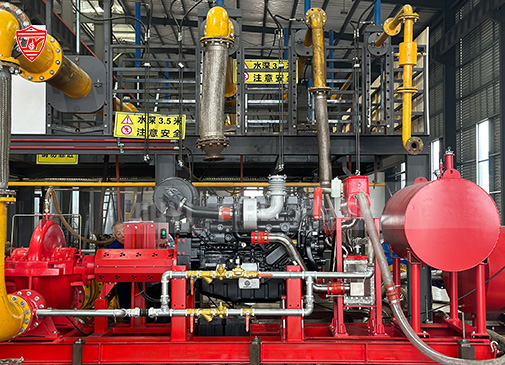Why Fire Pump Testing is Essential
Fire pumps play a crucial role in fire protection systems by ensuring adequate water pressure in emergencies. However, like any mechanical system, fire pumps require regular testing to confirm their functionality. Proper testing helps detect potential failures before they compromise safety.

Fire Pump Testing Requirements
Fire pump testing must comply with NFPA 25: Standard for the Inspection, Testing, and Maintenance of Water-Based Fire Protection Systems. The key testing requirements include:
- Weekly Churn Test: Running the pump without water discharge to check for proper operation.
- Annual Flow Test: Measuring the pump's performance under full flow conditions to ensure it meets design specifications.
- Mechanical and Electrical Checks: Evaluating engine function, battery charge, and control panels.
Step-by-Step Fire Pump Testing Procedure
-
Pre-Test Inspection
- Check for leaks, corrosion, and loose connections.
- Verify fuel, lubrication, and cooling levels (for diesel fire pumps).
- Ensure electrical connections are secure (for electric fire pumps).
-
Weekly No-Flow (Churn) Test
- Run the pump with the discharge valve closed.
- Monitor pressure gauges and listen for unusual noises.
- Verify automatic start and stop functions.
-
Annual Fire Pump Flow Test
- Open test headers or hose connections to simulate fire conditions.
- Measure pressure at 100%, 150%, and shutoff conditions.
- Compare results with manufacturer specifications.
-
Data Recording and Compliance Reporting
- Document all readings and test results.
- Identify any deviations and schedule corrective actions.
- Submit reports for regulatory compliance.
Common Fire Pump Issues & Troubleshooting Tips
- Low Pressure: Check for clogged pipes, worn impellers, or insufficient water supply.
- Failure to Start: Inspect control panels, power supply, or diesel fuel levels.
- Unusual Vibrations or Noise: Look for misalignment or loose components.
How Often Should Fire Pumps Be Tested?
- Weekly: No-flow churn test
- Monthly: Diesel engine fire pumps require additional tests
- Annually: Full flow test
Conclusion
Regular fire pump testing is essential for maintaining a reliable fire protection system. By following NFPA 25 guidelines and conducting routine inspections, you can ensure your fire pump is always ready for emergencies.
